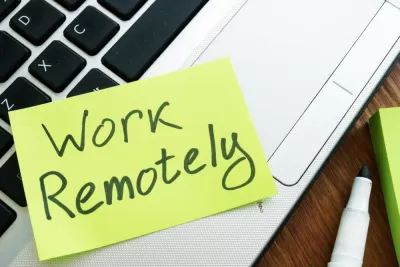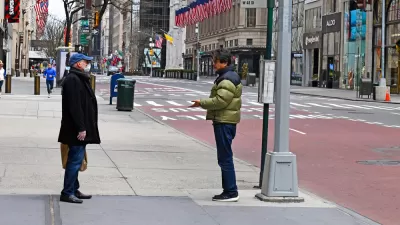Remote work increased threefold during the pandemic, but the numbers vary significantly from city to city and region to region. Almost half of D.C.-area employees, for example, worked from home in 2021, according to American Community Survey data.

Recently released data from the Census Bureau’s 2021 American Community Survey paints a more complete picture of the work from home trends upending commutes, lifestyles, and neighborhoods around the United States.
While remote work tripled between 2019 and 2021—to nearly 18 percent of all workers around the United States—the percentages varied widely by city and metropolitan region, according to an article by Tara Bahrampour for the Washington Post. In Washington, D.C., for instance, 48.3 percent of employees worked remotely in 2021—the highest percentage for any city in the country—followed by Seattle (46.8 percent), San Francisco (45.6 percent), Austin (38.8 percent), and Atlanta (38.7 percent).
The order shifts when considering metropolitan areas. When expanding beyond specific city limits, San Francisco (35.1 percent) and San Jose (34.8 percent) led this list, followed by D.C. (33.1 percent).
William Frey, a demographer with the Brookings Institution, is cited it he article explaining that work from home rates correlates strongly with the number of college-educated workers.
A lot more demographic data related to work from home and other trends, such as childhood poverty, are included in the source article below.
FULL STORY: D.C. was the top city for remote work in 2021, census data show

Maui's Vacation Rental Debate Turns Ugly
Verbal attacks, misinformation campaigns and fistfights plague a high-stakes debate to convert thousands of vacation rentals into long-term housing.

Planetizen Federal Action Tracker
A weekly monitor of how Trump’s orders and actions are impacting planners and planning in America.

Chicago’s Ghost Rails
Just beneath the surface of the modern city lie the remnants of its expansive early 20th-century streetcar system.

Bend, Oregon Zoning Reforms Prioritize Small-Scale Housing
The city altered its zoning code to allow multi-family housing and eliminated parking mandates citywide.

Amtrak Cutting Jobs, Funding to High-Speed Rail
The agency plans to cut 10 percent of its workforce and has confirmed it will not fund new high-speed rail projects.

LA Denies Basic Services to Unhoused Residents
The city has repeatedly failed to respond to requests for trash pickup at encampment sites, and eliminated a program that provided mobile showers and toilets.
Urban Design for Planners 1: Software Tools
This six-course series explores essential urban design concepts using open source software and equips planners with the tools they need to participate fully in the urban design process.
Planning for Universal Design
Learn the tools for implementing Universal Design in planning regulations.
planning NEXT
Appalachian Highlands Housing Partners
Mpact (founded as Rail~Volution)
City of Camden Redevelopment Agency
City of Astoria
City of Portland
City of Laramie





























